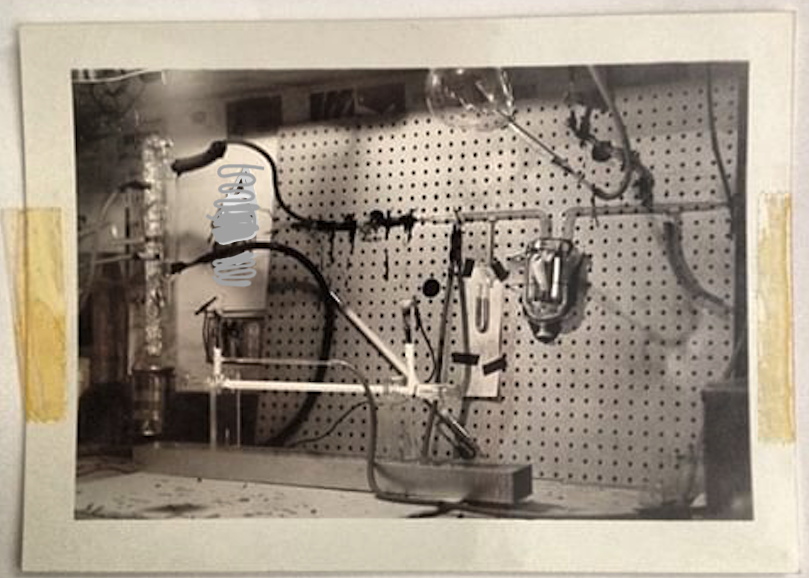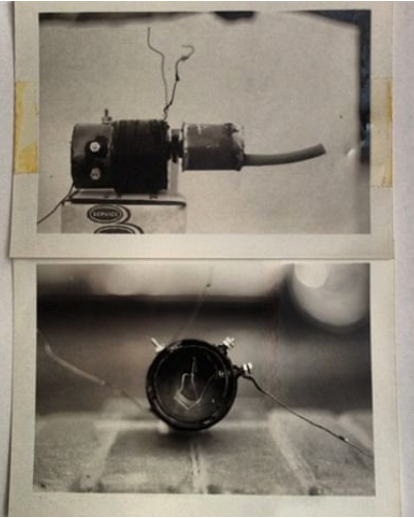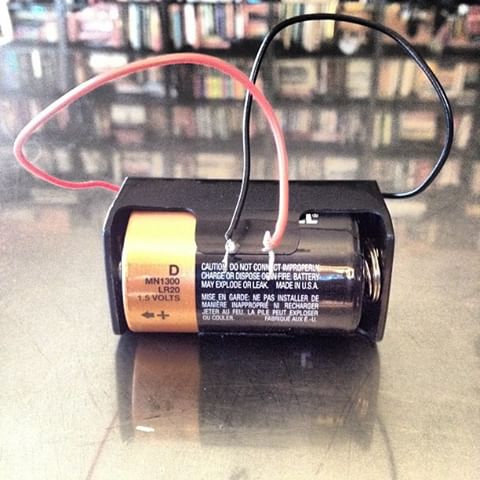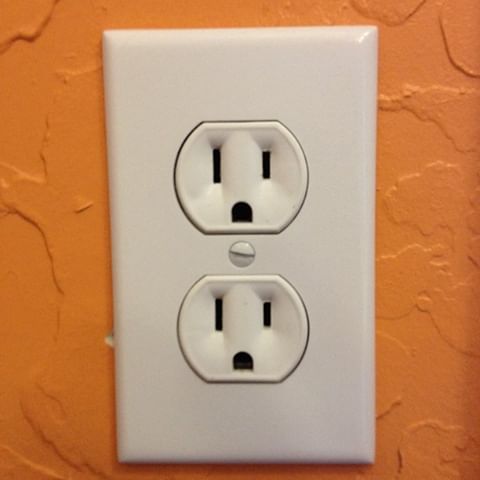My Tesla Evolution 1: Coil, Laser, Ion Rocket
WHICH ONE OF THESE COULD HAVE SHOCKED A SMALL CHILD INTO BEING A ROCKET SCIENTIST?
Thomas Edison didn’t invent direct current, but that’s what he used to power his other inventions. It’s hard to distribute and is limited. But still useful for an old technology.
It’s impossible to tell whether it was the butter knife I stuck in a wall socket as a very small child or my first Tesla coil sent me off on exploring high-energy physics and on my life-long fascination with Tesla’s science and inventions. And motivated me to invent high-voltage rocket engines.
See How Nikola Tesla & A Butter Knife Turned Me Into A Rocket Scientist for more on the butter knife and some of my other death-defying incidents.
THE FIRST TESLA COIL
I think I built my first Tesla coil when I was maybe nine or ten years old. By that time, I had moved my weird science experiments out of my bedroom and into the storage room off the carport. The electricity experiments didn’t thrill my parents. I kept blowing circuit breakers and knocking myself senseless touching various wires and terminals.
My folks tried to deflect my scientific interests. First, there was the chemistry set for Christmas. But before anyone woke up, I had created one giant batch of poisonous chlorine gas that emptied the house. And after I flushed all the beakers of reactants down the drain, it killed all the bacteria in the septic tank which then stopped up. And it never worked well again.
The acetylene gas produced from dropping calcium carbide into water also produced some spectacular results when ignited along with removing all the hair from my right arm.
GUNPOWDER AND CHEMICAL ROCKETS
I moved outside for a while, turned to perfecting a formula for gunpowder. I’d surely be arrested by Homeland Security today for the results of those successes. These were the early days of the space program. I do remember getting up at 4 a.m. to watch Alan Shepherd’s Mercury capsule take off. That inspired me to see if I could adapt my gunpowder formula to act as rocket propellent.
Only NASA had more rockets blow up on the launch pad that year. I did have one get 30 or 40 feet off the ground before exploding. That one sent flaming debris everywhere. Three houses down it set an awning on fire. I think that was the first time I came to the attention of the Jackson (Mississippi) Police Department’s juvenile division. It wasn’t the last.
RUSSIANS & FLAMING HOT AIR BALLOONS
The weather balloon trailing a 100-foot roll of aluminum foil that looked enough like Russian missiles to set off Air Force radar and scrambled fighter jets (this was the Cold War, remember?), and the small hot-air balloon made of dry cleaner bags and powered by flaming shoe polish scored two more police inquiries because by then, they knew where to look when weird things happened. Same when I knocked Channel 3 off the air for a bit and blew up the electrical transformer on the pole outside our house.
BIOLOGY: TOO EARLY FOR FRANKENPOOCHES
Anyway, desperate to heep me away from electricity, my folks bought me a whole series of biology experiments. One that came every month. Do weird things with Gibberellins and other plant hormones. Those kits came came one each month. That worked for a while, but unlike chemistry and physics, biology doesn’t go bang. And Gibberellins don’t create the Little Shop of Horrors effect I was really going for. A giant lima bean? Nah.
Also slooooow … boring. It’s an attention span thing. I still suffer from having very little. With my attention span, watching a plant grow was not going to cut it. And this was long before the days when you could engineer genes in the kitchen like you can today.
The idea of turning my cocker spaniel into a FrankenPooch would probably have made me concentrate harder. But DNA was still pretty much a mystery back when I was doing this in 1958 to 1960 or so. DNA’s double-helix structure wasn’t even confirmed until 1958. Genetic engineering had not yet leaped out of from the pages of paperback sci-fi novels.
GIANT TESLA COIL GETS ME KICKED OUT OF HOUSE
So it was that I kept returning to Tesla.
My parents moved me into the storage room after I built my third or fourth Tesla coil (each one bigger than the last). This last one had a secondary coil about four or feet tall. My room was right next to the kitchen. The first time I turned it on, all of the fluorescent lights in the kitchen flickered and the closest ones lit up entirely. The electrical arcs off the top of the secondary seemed to fill my bedroom.
Scared hell out of me.
And I was not allowed to enter it into the seventh grade science fair out of safety concerns.
So, by that point, it was time to move on. And the starting point for that was the Tesla Coil’s ability to make a fluorescent light glow at a distance. And I wanted to know about the glow.
IT WAS ALL ABOUT THE GLOW
Which is when I fell in love with ionized particles, plasmas and other phenomena caused by charged particles.
At high enough voltages, electricity arcs. Lightning’s the biggest display we usually see. But what we really see is the light given off by gas particles that have been excited by the electricity. It’s a quantum thing.
And hard to maintain constantly at atmospheric pressure. But suck some of the air out, and you can get a constant glow. Pump in a gas other than air (Nitrogen, Oxygen, Carbon Dioxide and other elements) and the color changes. Another quantum thing determined by electron orbits.
THE LASER AND THE ION ENGINE
And if you use the right mixture of Neon and Helium and you have the right kind of mirrors and some special glass attached to more glass tubing at just the right angle, you get a laser.
The mirrors and glass were hard to find in Mississippi in 1962 especially since the Ne-He laser had only been invented in 1960.
The first type of semiconductor lasers that are nearly ubiquitous today in everything from DVD drives to lecture pointers were invented in 1962.

Snapshot of a Neon-Helium gas laser I built in the garage circa in 1962 or 63. It’s the glowing tube lower center to the left. The tall object covered in aluminum foil is a mercury vapor vacuum pump. It lased intermittently and threw off a main beam and two other beams off the partially silvered mirrors at each end. I was 12 or 13 at the time.
It’s the glowing tube lower center to the left. The tall object covered in aluminum foil is a mercury vapor vacuum pump.
But, then, what I really liked was the charged particles — the plasma in the tube — not the laser beam.
And by now, the space program was going great guns, so I built an ion engine. Ion engines don’t have a lot of thrust like chemical rockets and work only in the vacuum of space. Or in a vacuum chamber which was a whole ‘nother technology I had to master in order to test my device.

Above is a snapshot of an ion engine I built in 1964 . It’s actually the second one I constructed and has been modified to send two different velocities of protons. Click image to enlarge.
Ion engines work by using electricity to rip the electrons off a gas (producing a positively charged ion), accelerating the ion to a high speed toward a negative electrode, and neutralizing them with electrons right before they can gather on the negative electron. The suitably neutral particle then zooms into space at high speed, producing thrust.
The beauty of an ion engine is that it uses very little fuel, and given enough time can propel a spacecraft far faster than chemical rockets can. This is why they are great for deep space missions.
So I built one in 1964. It won a ton of awards from NASA.
Thirty-four years later — in 1998 — NASA first used an ion engine to power the Deep Space 1 mission.
I couldn’t decide whether to make the laser or the ion engine my science fair project, so I threw them both in, calling the project, “Space Propulsion And Communications.” I won second place at the state science fair and was told that either one by itself would have taken first, but having them both together was confusing.
Deep space missions powered by electricity and high-energy particles definitely captured my imagination.



